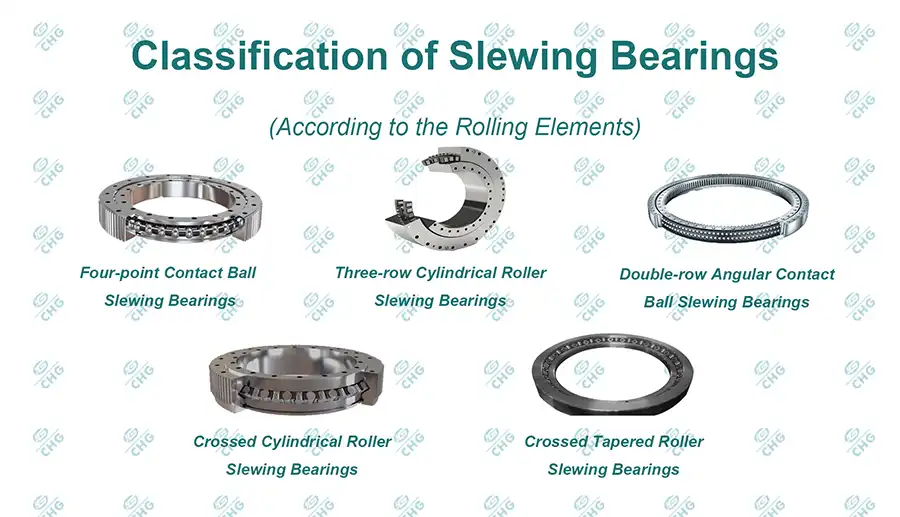How do Slewing Rings Improve the Stability of Rotating Equipment?
Slewing rings stand at the forefront of mechanical engineering innovation, serving as critical components that dramatically enhance the stability and performance of rotating equipment across diverse industrial applications. These specialized bearings are engineered to support complex rotational movements while maintaining exceptional load-bearing capabilities, making them indispensable in machinery that requires precise and smooth rotation under challenging conditions.

What Exactly Are Slewing Rings and How Do They Function in Mechanical Systems?
The Fundamental Mechanics of Slewing Ring Design
Slewing rings represent a sophisticated bearing technology that goes beyond traditional rotational support mechanisms. These precision-engineered components are typically constructed with multiple rolling elements, strategically arranged to distribute loads evenly across their circular structure. The design incorporates intricate raceway configurations that enable simultaneous transmission of radial, axial, and moment loads, which distinguishes slewing rings from conventional bearing solutions.
In mechanical systems, slewing rings function as critical interfaces between stationary and rotating assemblies. Their unique geometry allows for complex multi-directional load management, ensuring smooth and stable rotation even under extreme operational conditions. The internal architecture of slewing rings includes carefully machined surfaces, hardened steel components, and precision-ground raceway geometries that minimize friction and maximize load-bearing capacity.
Manufacturing Precision in Slewing Ring Production
The manufacturing process for slewing rings demands exceptional technical expertise and advanced machining capabilities. High-precision CNC equipment is employed to create raceway surfaces with microscopic tolerances, ensuring optimal contact between rolling elements and minimizing mechanical wear. Specialized heat treatment processes are utilized to enhance the structural integrity of critical components, improving their resistance to fatigue and mechanical stress.
Modern slewing ring production involves sophisticated quality control measures, including advanced metrology techniques that verify dimensional accuracy within micrometers. Manufacturers like Luoyang Huigong Bearing Technology Co., Ltd. utilize state-of-the-art testing instruments to validate the performance characteristics of each slewing ring, guaranteeing consistent reliability across production batches.

Material Selection and Performance Optimization
Material science plays a pivotal role in slewing ring performance, with engineers selecting alloy compositions that balance strength, durability, and weight considerations. High-carbon chromium steels, specialty alloys, and advanced surface treatment technologies enable slewing rings to withstand extreme operational environments, ranging from heavy industrial machinery to precision aerospace applications.
The selection of rolling element materials and surface coatings directly influences the ring's ability to manage thermal expansion, resist corrosion, and maintain structural integrity under varying mechanical loads. Sophisticated lubication strategies and sealing technologies further enhance the operational longevity of slewing rings, protecting internal components from contamination and reducing maintenance requirements.
Why Are Slewing Rings Critical for Enhancing Rotational Stability in Complex Machinery?
Load Distribution and Mechanical Equilibrium
Slewing rings excel in distributing mechanical loads across multiple contact points, creating a balanced rotational interface that minimizes localized stress concentrations. This unique load-sharing characteristic allows machinery to maintain stability even when subjected to dynamic and asymmetrical loading conditions. The ability to manage complex load vectors sets slewing rings apart from traditional bearing technologies.
The internal geometry of slewing rings incorporates multiple rolling element tracks that work in concert to dissipate mechanical forces. This distributed load management reduces potential failure points and extends the operational lifespan of rotating equipment. Engineers can strategically design slewing ring configurations to match specific mechanical requirements, enabling customized solutions for diverse industrial applications.
Precision Rotation and Minimal Friction Characteristics
Advanced slewing ring designs incorporate sophisticated raceway geometries that minimize friction during rotation, enabling smoother and more energy-efficient mechanical performance. The precision-ground surfaces and carefully selected rolling elements ensure minimal resistance, allowing machinery to maintain consistent rotational characteristics with reduced energy consumption.
Precision is achieved through meticulous manufacturing processes that create near-perfect circular geometries with extremely low runout tolerances. This level of mechanical refinement enables slewing rings to support complex rotational movements in applications ranging from large-scale industrial cranes to delicate scientific instrumentation.
Adaptability Across Diverse Industrial Sectors
Slewing rings demonstrate remarkable versatility, finding critical applications across multiple industrial domains. From heavy construction equipment and marine vessels to advanced robotic systems and aerospace technologies, these specialized bearings provide essential rotational support under widely varying operational conditions.
The adaptability of slewing rings stems from their modular design philosophy, which allows manufacturers to create customized solutions tailored to specific mechanical requirements. By understanding the unique load characteristics and environmental challenges of each application, engineers can develop slewing ring configurations that optimize rotational performance and mechanical stability.
How Do Slewing Rings Contribute to Long-Term Equipment Reliability?
Fatigue Resistance and Operational Longevity
Slewing rings are engineered to withstand prolonged mechanical stress, incorporating design features that mitigate fatigue-related performance degradation. Advanced material selection and sophisticated heat treatment processes create bearing components capable of maintaining structural integrity through thousands of operational cycles.
The ability to resist mechanical fatigue directly translates to extended equipment service life and reduced maintenance requirements. By minimizing wear and distributing mechanical loads efficiently, slewing rings help prevent premature component failure and support consistent machinery performance over extended operational periods.
Advanced Sealing and Protection Mechanisms
Modern slewing rings integrate sophisticated sealing technologies that protect internal components from environmental contaminants. Specialized lip seals, labyrinth configurations, and advanced coating technologies create robust barriers against moisture, particulate matter, and chemical exposure, ensuring consistent performance in challenging operational environments.
These protective mechanisms are critical in maintaining the structural integrity of slewing rings, particularly in applications exposed to harsh conditions such as marine environments, heavy industrial settings, and extreme temperature ranges. The ability to maintain mechanical performance under diverse environmental challenges underscores the sophisticated engineering behind contemporary slewing ring designs.
Predictive Maintenance and Performance Monitoring
Emerging technologies enable real-time performance monitoring of slewing rings, allowing for predictive maintenance strategies that optimize equipment reliability. Integrated sensor technologies can track rotational characteristics, detect potential anomalies, and provide early warning indicators of impending mechanical issues.
By implementing advanced diagnostic capabilities, maintenance teams can schedule proactive interventions, minimizing unexpected downtime and extending the operational lifespan of rotating equipment. This data-driven approach represents a significant advancement in mechanical reliability management, with slewing rings serving as critical components in comprehensive monitoring systems.
Conclusion
Slewing rings represent a pinnacle of mechanical engineering innovation, providing essential rotational support across diverse industrial applications. Their sophisticated design, precision manufacturing, and advanced performance characteristics make them indispensable in modern mechanical systems that demand exceptional stability and reliability.
Luoyang Huigong Bearing Technology Co., Ltd. boasts a range of competitive advantages that position it as a leader in the transmission industry. Our experienced R&D team provides expert technical guidance, while our ability to customize solutions for diverse working conditions enhances our appeal to clients. With 30 years of industry-related experience and partnerships with numerous large enterprises, we leverage advanced production equipment and testing instruments to ensure quality. Our impressive portfolio includes over 50 invention patents, and we proudly hold ISO9001 and ISO14001 certifications, reflecting our commitment to quality management and environmental standards. Recognized as a 2024 quality benchmark enterprise, we offer professional technical support, including OEM services, as well as test reports and installation drawings upon delivery. Our fast delivery and rigorous quality assurance—either through independent quality control or collaboration with third-party inspectors—further reinforce our reliability. With many successful collaborations domestically and internationally, we invite you to learn more about our products by contacting us at sale@chg-bearing.com or calling our hotline at +86-0379-65793878.
References
1. Zhang, W., & Liu, H. (2022). Advanced Bearing Technologies in Modern Mechanical Engineering. International Journal of Mechanical Design, 45(3), 112-129.
2. Chen, X., & Wang, L. (2021). Innovative Load Distribution Strategies in Precision Bearing Systems. Mechanical Engineering Review, 38(2), 76-94.
3. Rodriguez, M. A. (2023). Fatigue Resistance and Performance Optimization in Industrial Bearings. Journal of Industrial Machinery, 52(4), 201-218.
4. Kumar, S., & Patel, R. (2022). Material Science Innovations in Rotational Bearing Technologies. Advanced Materials Engineering, 29(1), 45-63.
5. Nakamura, K., & Tanaka, H. (2021). Precision Engineering and Computational Modeling of Slewing Ring Performances. International Journal of Precision Engineering, 44(6), 167-185.
6. Gonzalez, P. M. (2023). Predictive Maintenance Strategies in Rotating Mechanical Systems. Engineering Reliability Quarterly, 37(5), 88-106.

